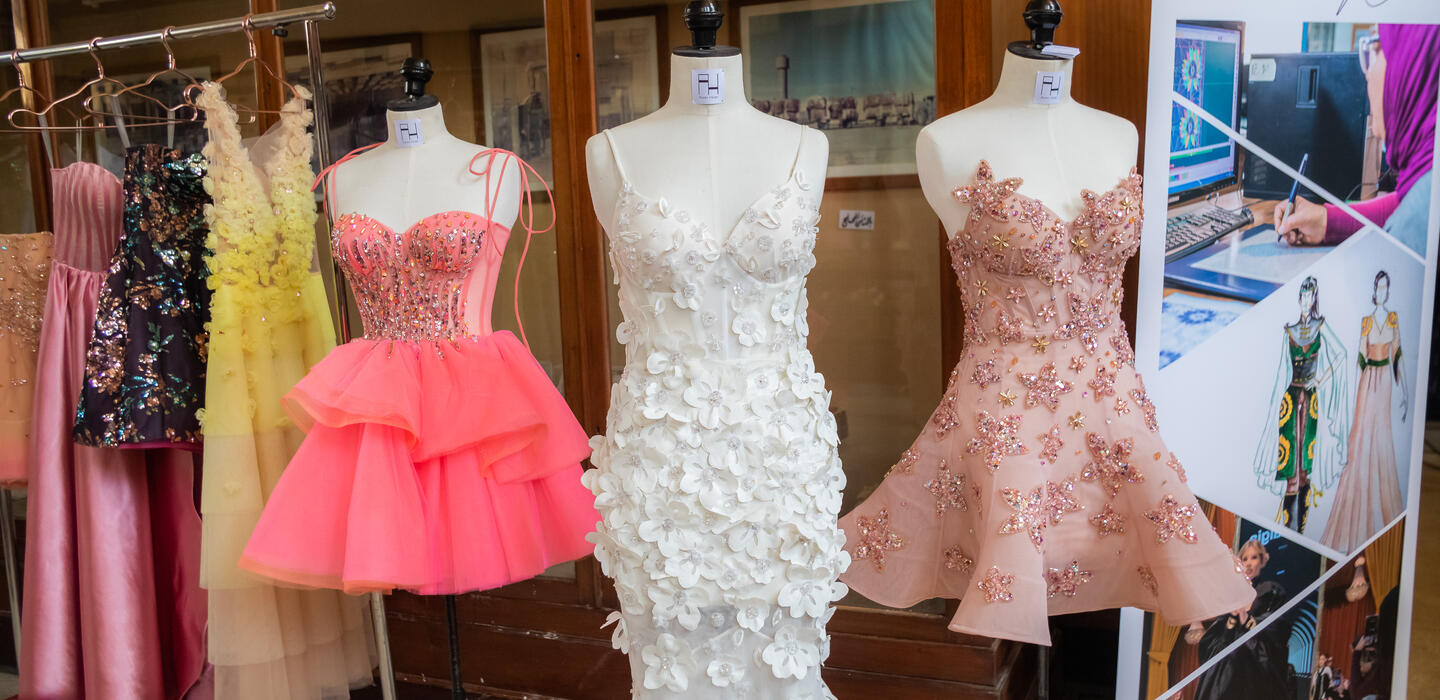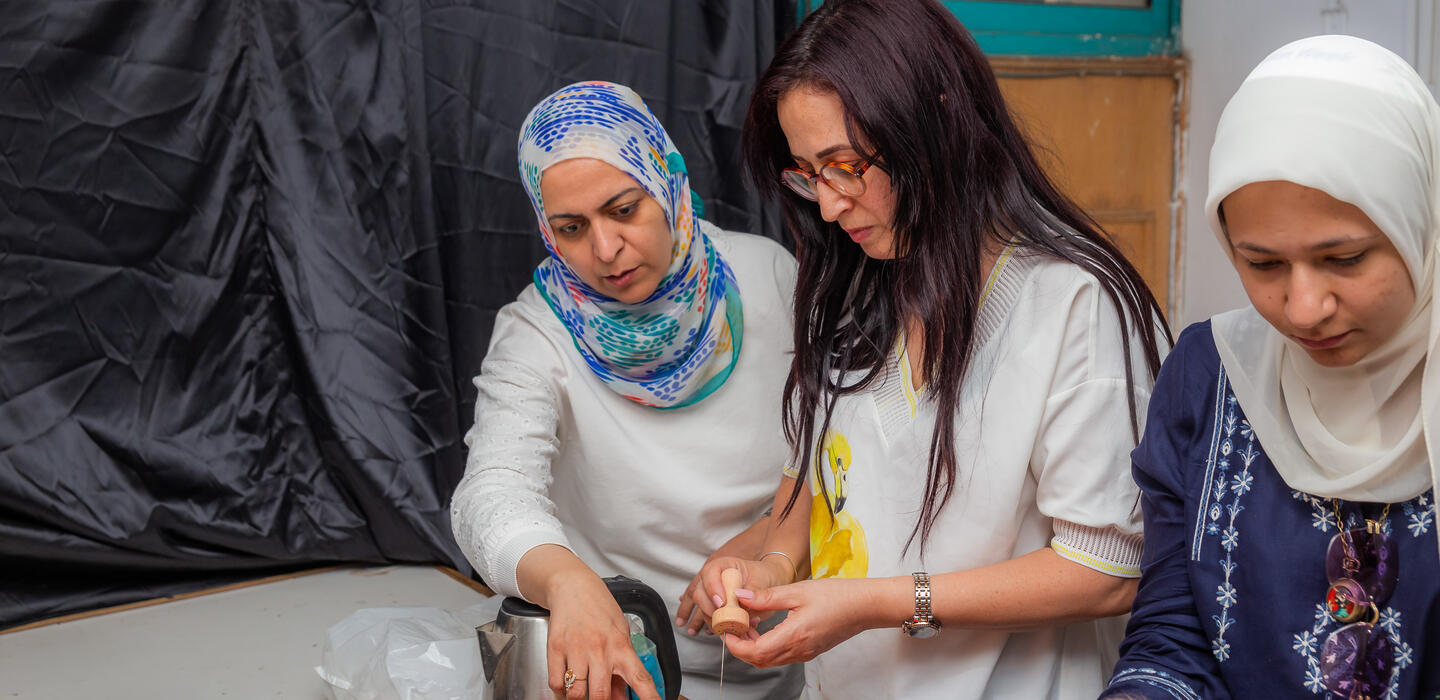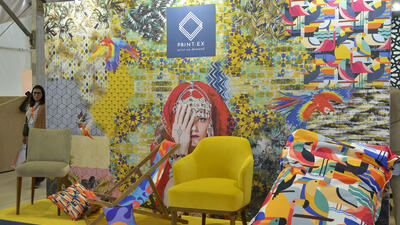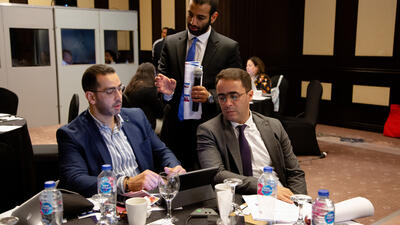


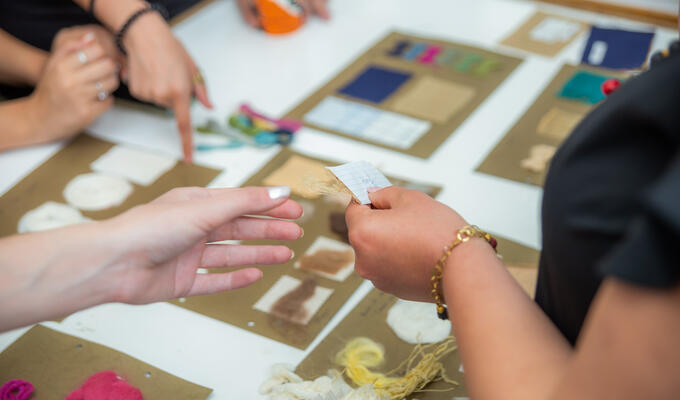
MENA takes Egypt Fashion Week 2023
On 13 and 14 May, fashion designers and academic institutions from Egypt, Jordan, Morocco and Tunisia took part in the first-ever Egypt Fashion Week, highlighting their talent and work to the world.
The GTEX/MENATEX project at the International Trade Centre (ITC) hosted a showroom for 16 talented creatives, featuring top-quality textiles, fabrics, and clothing designs. Ahead of Fashion Week, three international experts gave the designers personalized coaching and guidance to choose the right products and create compelling marketing materials. This helped them put together an aesthetically pleasing setup that told a unique story with regional appeal.
The event brought together fashion enthusiasts, industry professionals, and media, providing designers a unique opportunity to connect with potential customers and partners. The platform showcased their creativity and introduced them to a wider audience. Connecting with buyers and store owners from Egypt and across the region strengthens their viability.
‘Participating in the first edition of Egypt Fashion Week is a great experience and a wonderful opportunity for us as a community of Arab designers to come together,’ said Moroccan designer Salima Chaieb. ‘The unique aspect of this event is that we have the chance to attend valuable conferences and listen to international leading figures in the fashion industry, making it a truly rich experience.’
Decoding diversity
The GTEX/MENATEX showroom was a vibrant hub of diversity. Each designer delivered powerful statements speaking for sustainable business models, upcycling practices, body positivity, the art of embroidery, and preserving cultural heritage through textiles.
One Jordanian designer explained how to promote second-hand fashion and to create pieces that embrace diverse body types. An Egyptian brand impressed with its upcycling work, with designs entirely made out of upcycled waste and material.
Other designers showcased bold statement pieces detailed with hand embroidery, techniques specific to the region – such as the Moroccan Fesi and Rabati embroideries, or using pharaonic-inspired figures – mixing modern trends with heritage.
Connecting academics and students in fashion
On 15 May, fashion professionals and academics from the four countries joined two international experts to speak with the next generation of designers at Helwan University.
Students and teachers analyzed and discussed fashion trends. The experts led workshops and sessions on three themes: textile and fabric manipulation, sustainable fashion and upcycling, and creativity and digital design.
‘We are already starting to consider how to integrate the topics introduced during the workshops in developing next year's curriculum,' said Wedian Madian, associate professor at Helwan. 'The workshops provided students with a new and innovative approach to learning, enabling them to effectively process information and expand their knowledge base.
For the first theme, students learned about felted wool. They both observed the creation process and got hands-on experience working the wool themselves. One workshop showed how to identify textiles and fabrics, what materials are available, and how to choose the right materials for different designs.
For the second theme, students learned about upcycling techniques, from the latest trends in sustainable fashion to the design-thinking process for using recycled materials. Another workshop showed how to turn waste materials into functional fabrics.
And for the third theme, students learned how to create digital sketches and to use the newest technology to communicate their design ideas. Another workshop focused on colour perception, where students learned about the psychology of colour and its use in designs to create a desired effect.
Egypt
Fashion & Design Center
School of Applied Arts at Helwan University
Morocco
ENSAIT
Le Cluster Mode du Maroc
Casa Moda Academy
Jordan
Garment Design Training Center
Tunisia
ENIM
Cluster Mode Tunis
Institut Supérieur de la Mode de Monastir
About the project
The Middle East and North Africa Textile and Clothing Programme (MENATEX) covers four countries in the MENA region: Egypt, Jordan, Morocco and Tunisia. The International Trade Centre, with support from the Swedish Government, implements the programme.










